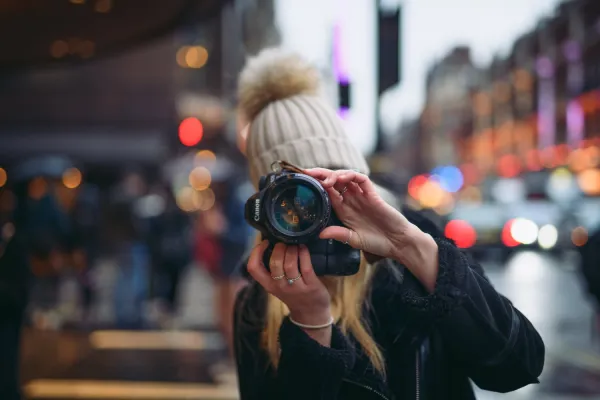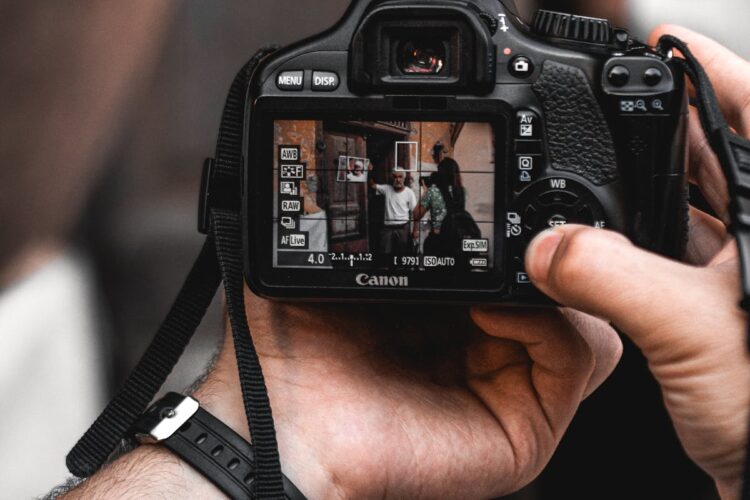When you’re new to photography, the array of settings and options on a camera can seem overwhelming. However, understanding three fundamental elements—ISO, aperture, and shutter speed—can dramatically improve your ability to take great photos. These three settings form what is commonly known as the “exposure triangle,” and mastering them is key to gaining full control over your camera and capturing the perfect shot.
In this beginner’s guide, we’ll break down each of these settings, explain how they interact with one another, and offer practical tips to help you start taking better photos right away.
What is ISO?
ISO refers to the sensitivity of your camera’s sensor to light. The lower the ISO number, the less sensitive it is, and the finer the grain in your photos. Conversely, a higher ISO number increases the sensor’s sensitivity to light, which is useful in low-light situations but can introduce noise (graininess) into your images.
When to Use Low ISO:
Use a low ISO (100-200) in bright conditions, such as sunny outdoor scenes, where there’s plenty of light. This will help you capture sharp, high-quality images with minimal noise.
When to Use High ISO:
A higher ISO (800 and above) is useful in low-light conditions, like indoors or at night, where you need more sensitivity to capture enough light. However, be mindful of the noise that can appear in your photos at these settings, especially if you’re using an entry-level camera.
Pro Tip:
Always try to keep your ISO as low as possible to maintain image quality, and only increase it when necessary to avoid underexposure.
Understanding Aperture
Aperture refers to the size of the opening in your camera’s lens that allows light to enter. It is measured in f-stops (e.g., f/2.8, f/5.6, f/11), with lower numbers indicating a larger aperture and higher numbers indicating a smaller aperture. The aperture setting affects both the exposure and the depth of field in your images.

Large Aperture (Low f-stop):
A larger aperture (like f/2.8) lets in more light, which is ideal for low-light situations. It also creates a shallow depth of field, meaning that only a small part of the image is in focus while the background is blurred. This effect, known as “bokeh,” is often used in portrait photography to make the subject stand out against a soft, blurred background.
Small Aperture (High f-stop):
A smaller aperture (like f/11 or f/16) lets in less light, making it suitable for bright conditions. It also increases the depth of field, meaning that more of the scene will be in focus. This setting is commonly used in landscape photography, where you want both the foreground and background to be sharp and clear.
Pro Tip:
Experiment with different aperture settings to see how they affect your images. Start with a wide aperture for portraits and a narrow aperture for landscapes, and adjust based on the effect you want to achieve.
Mastering Shutter Speed
Shutter speed controls how long the camera’s shutter remains open, allowing light to hit the sensor. It is measured in seconds or fractions of a second (e.g., 1/500s, 1/30s, 1s). Shutter speed not only affects exposure but also how motion is captured in your photos.
Fast Shutter Speed:
A fast shutter speed (like 1/1000s) freezes motion, making it ideal for capturing action shots, such as sports events or wildlife. It’s also useful in bright conditions where too much light could overexpose your image if the shutter remains open for too long.
Slow Shutter Speed:
A slow shutter speed (like 1/30s or slower) allows more light to enter the camera, which is useful in low-light situations. It also creates a sense of motion in your images. For example, you can use a slow shutter speed to blur the movement of water in a waterfall or to create light trails from moving vehicles at night.
Pro Tip:
When using a slow shutter speed, consider using a tripod to avoid camera shake, which can result in blurry images. If you’re shooting handheld, try to keep the shutter speed faster than 1/60s to minimize motion blur.
Balancing the Exposure Triangle
The key to great photography is finding the right balance between ISO, aperture, and shutter speed. These three settings work together to control the exposure of your image, and adjusting one will often require a change in the others to maintain the correct exposure.
Example 1:
If you’re shooting in low light and need to increase your ISO to avoid a dark image, you might also need to widen your aperture (lower f-stop) to let in more light. Alternatively, you could slow down your shutter speed to allow more light to reach the sensor.
Example 2:
If you’re photographing a moving subject in bright light and want to freeze the action, you might choose a fast shutter speed. To compensate for the reduced light entering the camera, you could lower your ISO and/or widen your aperture.
Pro Tip:
Start by choosing the most important setting based on your scene—whether it’s ISO for light sensitivity, aperture for depth of field, or shutter speed for motion control—then adjust the other two settings to achieve the perfect exposure.
Incorporating Camera Settings into a Photo Booth Experience
Understanding ISO, aperture, and shutter speed isn’t just for traditional photography; it’s also incredibly useful in a “photo booth” setting. Whether you’re setting up a photo booth at a wedding, a party, or a community event, getting the camera settings right can make a big difference in the quality of the photos.
In a photo booth rental Las Vegas, you’ll likely want a small aperture (high f-stop) to ensure that both the subjects and the background are in focus. Depending on the lighting conditions, you may need to adjust the ISO to avoid underexposed or overexposed images. And since your subjects might move or interact with props, a moderate shutter speed can help capture clear, sharp images without too much motion blur.
By understanding how to control these settings, you can create a photo booth experience that not only provides fun memories but also delivers high-quality images that everyone will love.
Conclusion
Mastering ISO, aperture, and shutter speed is essential for anyone looking to take their photography to the next level. By learning how these settings interact within the exposure triangle, you’ll gain greater control over your images, allowing you to adapt to different lighting conditions, achieve the desired depth of field, and capture motion with precision.

